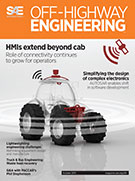Standard
Model Based Functional Safety
2018-05-17
WIP
SAE1005
Provides standard guidance on major tasks and activities and how to implement and manage Functional Safety and software system safety aspects of Model Based System Engineering (MBSE). Process focus is on safety-critical functions (SCF) of complex software intensive systems being modeled and depicted graphically as part of MBSE and software engineering to ensure safety engineering aspects are tracked and captured as part of models to enhance safety documentation and produce objective safety evidence.















